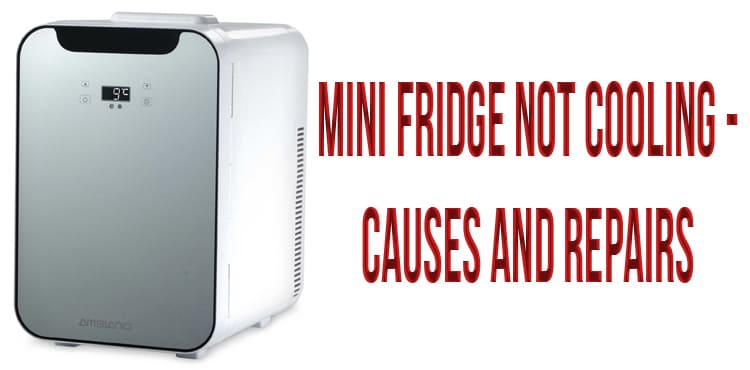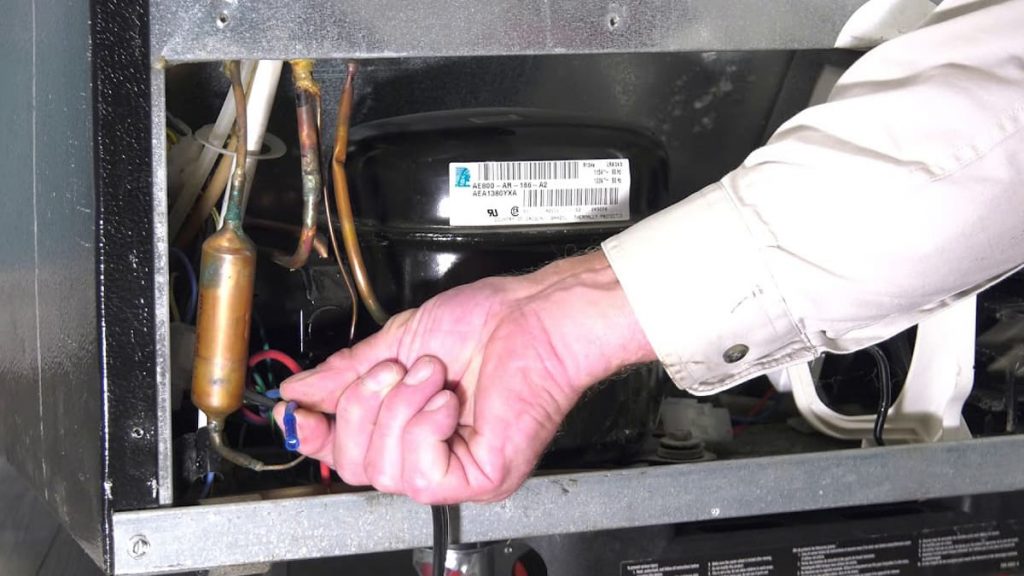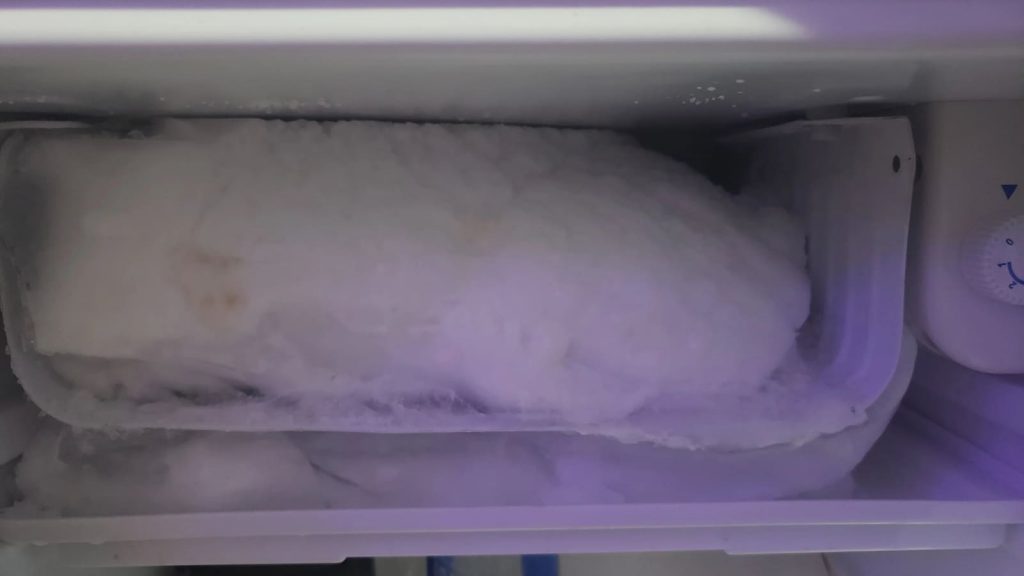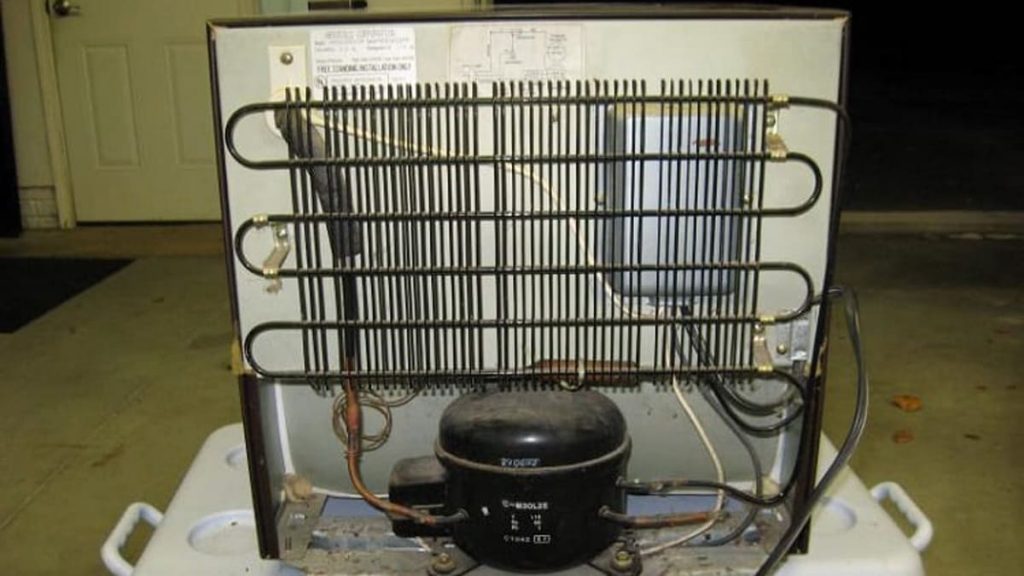The mini-refrigerator is a device that is actively used for installation in offices, hotels, hospitals and other facilities where there is no need to store a lot of food for a long time. The dimensions of this refrigeration equipment are similar to the dimensions of a modern washing machine. The market offers various models of refrigeration devices – freestanding units and built-in appliances.
The useful volume of mini-refrigerators is no more than 120 liters, but this is enough to keep a large number of products fresh for several days, cooling them with high quality. If it happens that the equipment has stopped cooling, you need to call a repairman or try to make repairs yourself, with the appropriate knowledge and experience.
Advice! If there are no repair skills, it is recommended to wait for a qualified craftsman and entrust the restoration of equipment to him. Unqualified intervention in the design of the device is guaranteed to lead to more serious malfunctions, due to which the refrigerator will have to be disposed of and a new one purchased. This will negatively affect the budget.
The main causes of the malfunction
When a mini-refrigerator breaks down, the first thing you need to know is the features and causes of the main malfunctions, then you can finally decide whether to call the wizard or try to fix the device yourself. If the refrigeration equipment suddenly stops cooling, you should not worry much and panic, the malfunction is not always complex and critical. Quite often, you can restore the performance of the unit yourself, saving money on calling a specialist. The most common reasons why the refrigeration unit stops cooling food are the following:
- leak of refrigerant (freon);
- the motor or electronic board is out of order;
- stuck valve responsible for defrost;
- no power supply;
- dirt in capillary tubes;
- mechanical failures;
- breakdown of the thermostat.
Carrying out self-repair, you need to move from small to large. In addition to the above, if there are other, less significant reasons leading to a malfunction of the refrigeration compartment. For example, a mini-refrigerator is simply not connected to the mains, the main door of the appliance is not closed well, the seal is abraded, and hot dishes are stored in the refrigerator. All these causes are so simple that their elimination does not require much time and special skills, you just need to remember them before looking for a malfunction in the compressor.
Troubleshooting the cooling system
Due to its small size, the mini-refrigerator cools down quite quickly inside, so it is possible to determine that a breakdown has occurred in the equipment in a few hours. The most common malfunction in miniature refrigerators, experts call a coolant leak. A sign of this breakdown is the absence of cold when the engine is running normally.
Refrigerant leak
Freon leakage is one of the most common reasons why compressor-type refrigeration appliances stop cooling. You won’t be able to cope with this malfunction on your own, as special tools will be needed to fill the new liquid and restore the refrigerator’s tightness indicators. If the leak was made by the user, through his fault, accidentally ruining the evaporator, then returning its integrity to the circuit is impossible, the part will have to be replaced with a new one.
Engine or electronics failure
If the compressor of the mini-refrigerator has broken down or its emergency shutdown systems have failed, you can find out about this visually by examining the unit. Inside the refrigerator compartment, the indication and the presence of light will be noticeable, although the sound of the engine will not be heard. If the motor itself malfunctions, it must be replaced and filled into the refrigerant system. Engine repair is an expensive procedure and can cost the owner up to 70 percent of the cost of new equipment.
If a failure occurred in the control board or in the engine switching system, then repair is quite possible, only its expediency will directly depend on which part failed and for what reason. If the starting relay is broken, then it can be replaced, if the control unit burned out, then it is better to buy a new refrigerator, since repairing the unit will be expensive. Problems with the electronics of mini-refrigerators are rare when a voltage stabilizer is used.
Dirt in the pipes
A significant role in the stable operation of refrigeration equipment is played by the evaporator, or rather its throughput. During operation, it can easily become clogged, and the refrigerant will not cool the main compartment sufficiently. Capillary tubes can also become clogged, for reasons such as:
- wrong type of oil is used;
- low quality refrigerant;
- blockage obtained during repair activities;
- poor quality compressor oil.
Poor-quality refrigerator oil begins to decompose after some time. Due to chemical reactions detrimental to the equipment, it waxes. At this moment, solid fractions are formed, settling on the walls of the evaporator, penetrating into the capillary tubes and clogging the thermostat. To eliminate problems, the equipment must be thoroughly cleaned.
Thermostat malfunction
The compressor mini-refrigerators have a common refrigerant circuit and two evaporators, one of which cools the main chamber, the other – the freezer compartment. To ensure that the equipment does not cool below the required temperature, a thermostat is mounted between the evaporators. The thermostat is a mechanical device designed to regulate the amount of freon flowing from the freezer evaporator to the main chamber. The main working tool of the thermostat is a tension spring made of metal. Over time, the metal begins to lose its elasticity, which will cause the thermostat to function worse.
No power supply
If the refrigeration unit is more than 5 years old, then there may be problems with the electrical supply. After some operational period, the wiring of residential, municipal and industrial buildings wears out and becomes unusable. In the event of a power failure, the main elements of the refrigeration unit suffer, which ensure a stable-normal temperature in the main chamber, these are:
- compressor;
- temperature sensor;
- Temperature regulator.
If one of these devices does not receive electricity, you can check this as follows. Finding out about the lack of power on the temperature sensor is quite simple. You need to find the location of the sensor (written in the instructions), remove the case from it and check the flow of electricity with an indicator screwdriver.
To check the power to the compressor, you do not need to disassemble the refrigerator. The compressor is located at the bottom of the equipment at the rear. To eliminate the malfunction, you need to find the compressor power supply terminals and measure the voltage using an indicator screwdriver. On the thermostat, the power is checked according to a more complex scheme. It is located in front of the refrigeration unit, immediately behind the temperature regulator. After the device has been found, its connection to the mains is checked with the same indicator screwdriver.
Mechanical failures
During transportation, lifting to the floor and installation of refrigeration equipment, there is a possibility of damage to the heat exchanger and copper pipes. The radiator located on the back wall can be visually inspected. The tubes may break in the compressor area. During delivery, the case of the device may also be damaged. Through the resulting crack, moisture will begin to penetrate into the thermal insulation of the mini-refrigerator and destroy it. The characteristics of the heat-insulating material will change, and heat will freely penetrate into the refrigerator compartment.
Before turning on the refrigerator in the network, after its delivery and installation, it is necessary to wait for a time – 45 minutes or an hour. If this is not done, then the refrigerator can be seriously damaged, especially if it was installed in winter, in severe frosts. Let the device warm up in the room, this will protect it from short circuits.





